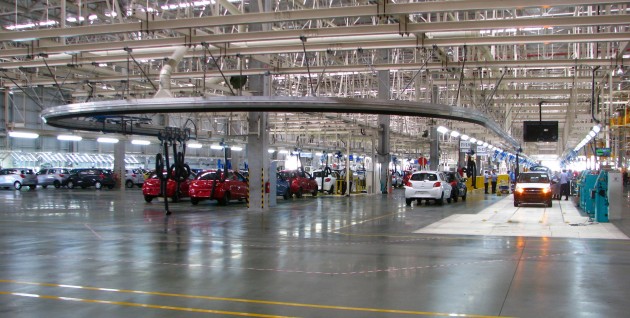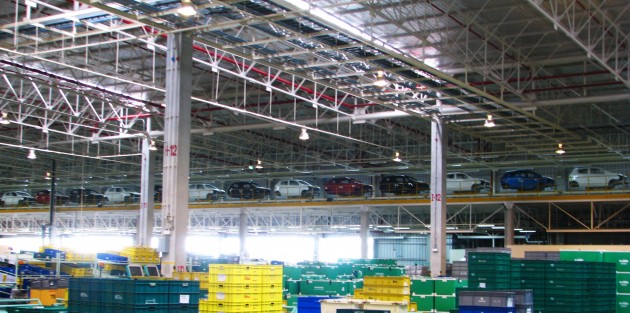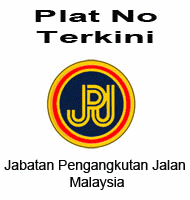"Mitsubishi Mirage Factory"

The area is called Laem Chabang Industrial Estate located in the province Chonburi in Thailand.
Despite Bangkok is far from where I am, about 100 km northwest of here, its location is strategic. The factory is only 3.5 km away from the Laem Chabang Deep Sea shipping port where it receives parts and exports complete built-up cars to 140 countries around the world. In this sense, logistics are kept simple.

In total, there are three factories inside Mitsubishi’s 1,060,000 square-metres land, which was established in January 1987. Factory One and Two have produced vehicles such as the Triton, Pajero Sport and Lancer EX. These factories are old.
The third is brand new. Its robots and lights were officially powered up in March 2012 for the specific task of producing the Mirage. This specialised responsibility comes from the factory’s ability to put together the high tensile steel frame that brings the weight of the small car down.

It cost the Japanese carmaker THB 7,000,000,000 or about RM690 million to build this plant. The factory features a high and heat protected roof to keep things cool inside. On the floor, each stage of the production is strategically placed so that the entire manufacturing flow becomes one simple process – press, body, paint then assembly.
A thing to note here is that the paint shop uses water-based paint, which reduces VOC and carbon dioxide. Mitsubishi claims that they are the first in Thailand to use water-based paints to colour the cars. Just in case you don’t know what VOC is and you have not heard that radio ad about that paint, here is an exerpt from Wikipedia:

A thing to note here is that the paint shop uses water-based paint, which reduces VOC and carbon dioxide. Mitsubishi claims that they are the first in Thailand to use water-based paints to colour the cars. Just in case you don’t know what VOC is and you have not heard that radio ad about that paint, here is an exerpt from Wikipedia:
Volatile organic compounds (VOCs) are organic chemicals that have a high vapor pressure at ordinary, room-temperature conditions. Their high vapor pressure results from a low boiling point, which causes large numbers of molecules to evaporate or sublimate from the liquid or solid form of the compound and enter the surrounding air. An example is formaldehyde, with a boiling point of –19 °C (–2 °F), slowly exiting paint and getting into the air. Many VOCs are dangerous to human health or cause harm to the environment.

Production capacity of the factory is quoted at 150,000 units per year and can be increased to a maximum of 200,000 units in the future. Currently, the factory produces only 130,000 Mirages a year, which equates to 26.8 units/hour.
Completed Mirages will make its way to countries in the ASEAN region, Europe as well as Japan. So if the Mirage ever makes its way here, we can be assured that the ones we’re getting are of the same built quality as the ones the Japanese will drive.




